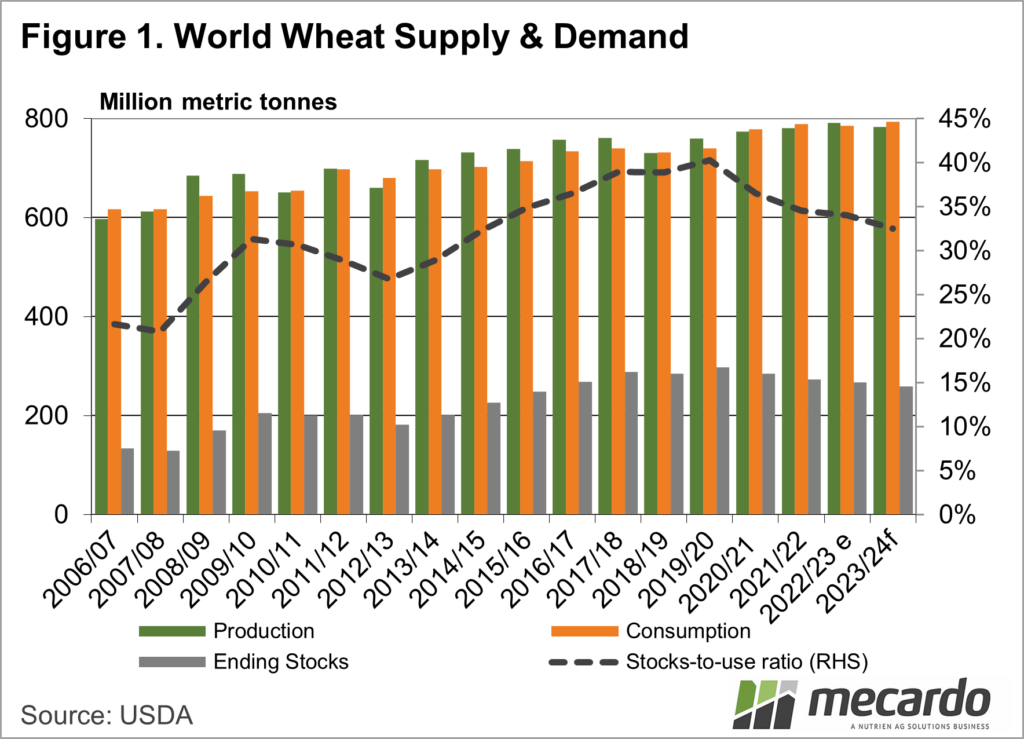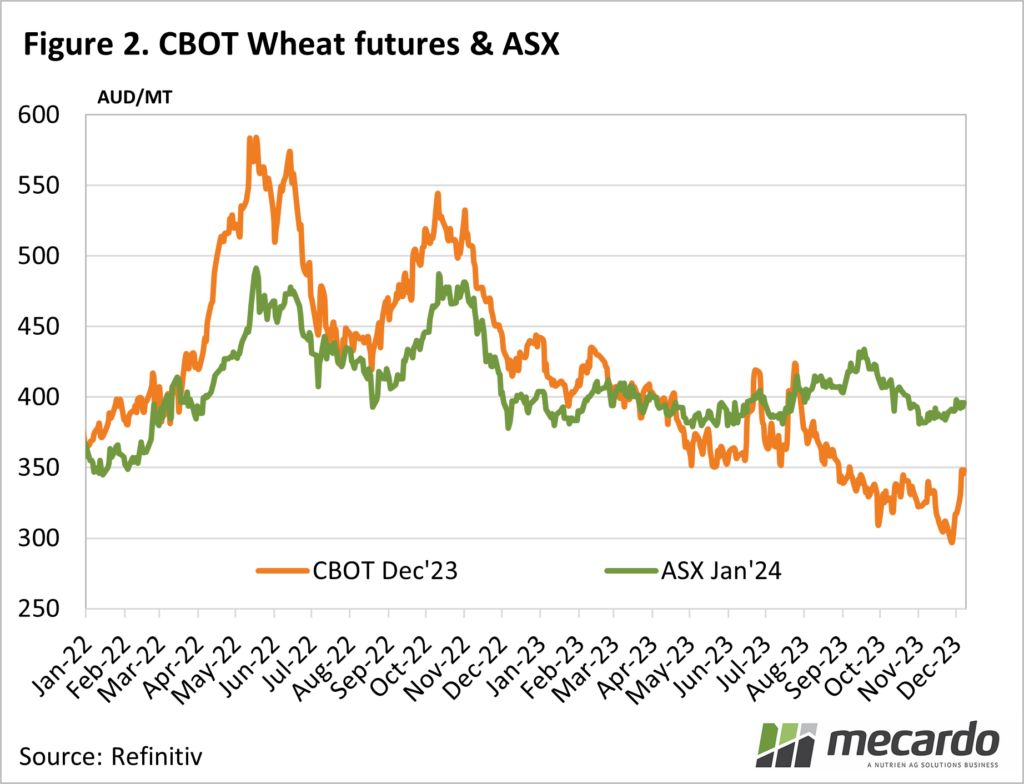International wheat markets have been looking oversold for a while, and last week finally saw a price reversal. While the World Agricultural Supply and Demand Estimates (WASDE) report wasn’t the catalyst, it did give some clues as to the drivers of turnaround.
The headline numbers
for wheat in the WASDE were relatively benign.
The United States Department of Agriculture (USDA) forecast world wheat
production to be up 2mmt, with 1mmt of this coming from an increase in
Australian production.
World wheat
consumption was also forecast to rise by 2mmt, with ending stocks declining
marginally, taking stocks to use lower again, now forecast to be 32.5%. Figure 1 shows the world wheat equation
tightening, with ending stocks hitting a seven-year low and stocks to use a nine-year
low.
Despite the tightening
picture for wheat, there was little change in the corn supply and demand
picture. With an expected surplus this
year, and increasing stocks, corn remains a drag on global grain prices.
In the text of the
WASDE, we find some reasons for the recent strength in wheat prices in the
US. US wheat exports for 23-24 were forecast
0.7mmt higher, on the back of some large shipments to China. Some wheat demand is shifting back to the US
as Black Sea exports slow.
The oversold nature of
the US wheat market precipitated a solid bounce. Figure 2 shows US wheat futures have gained
$50/tonne in less than two weeks. The
rally has been the strongest since the concerns over the war in Ukraine back in
July, but it only really dragged prices back to September levels.
Australian wheat
markets appear to be running their own race at the moment. The rally in US futures has seen only
marginal support in ASX January Wheat Futures.
APW1 wheat has traded in a very tight range for much of the harvest in
all zones. Port values for APW1 have
bounced between $380 and $400/t. The
much larger movement in US prices has seen wild swings in basis, from +$90 per
tonne, back to $50/t this week.
What does it mean?
The bounce in US wheat prices is good news for local values, as it will add support, and make it hard for prices to fall. If the strength remains in US prices post our harvest, it could precipitate some price increases, as it makes our wheat more competitive in international markets.
Have any questions or comments?
Key Points
- The WASDE showed further tightening of global wheat supplies, albeit minor.
- Increased US wheat exports to China are adding support to US wheat futures.
- Local prices have remained steady despite increasing US values, increasing potential upside.
Click on figure to expand
Click on figure to expand
Data sources: CME, MATIF, USDA, Mecardo














